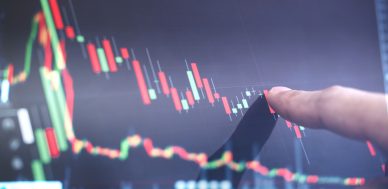Economic Growth Is Not the Case These Days
If you think there’s economic growth in the U.S. economy, you may have been truly misled. The economy is in poor shape, with the average Joe being squeezed financially.
Over the past few years, the stock market has gone through the roof. However, that really doesn’t say much about the conditions in the U.S. economy. Investors bought into the idea that there is economic growth, so they just went ahead and bought.
Economic growth is classified as occurring when the general standard of living is improving. Below are five things that prove that this is not really what’s going on in reality.
1. Americans Are Having Trouble Paying Bills
A large number of Americans don’t have the money to pay for basic utility bills.
According to the Residential Energy Consumption Survey, conducted by the U.S. Energy Information Administration, one-third of American households had a difficult time paying energy bills or having sufficient cooling and heating in their homes in 2015. (Source: “One in three U.S. households faces a challenge in meeting energy needs,” U.S. Energy Information Administration, September 19, 2018.)
2. Many Still Struggle to Bring Food to the Table
Food is a problem for many Americans as well, with food stamp usage in the U.S. remaining elevated. In fact, as of June 2018, there are 39.34 million American using food stamps. (Source: “Supplemental Nutrition Assistance Program,” U.S. Department of Agriculture, September 7, 2018.)
This is higher than what it was before the financial crisis of 2008 and 2009. And for some additional perspective, there are more Americans using food stamps than the entire population of Canada.
3. Their Savings Are Anemic
In times of economic growth, you expect consumers to not just spend, but save as well. However, this is not the case in the current U.S. economy.
According to the 2018 Planning & Progress Study by Northwestern Mutual, one in three Americans has less than $5,000 in retirement savings. What’s more, eight out of 10 Americans are “extremely” or “somewhat” concerned about living comfortably in retirement. This is an issue we have discussed on this site before.
4. They Are Spending by Borrowing
Consumers are spending—by borrowing more. Look at the chart below, which plots consumer debt in the U.S. economy.
Right after the previous recession (the gray area), consumer credit in the U.S. stood at around $2.57 trillion. Now, it’s edging close to $4.0 trillion, or an increase of 55%. (Source: “Households and Nonprofit Organizations; Consumer Credit; Liability, Level,” Federal Reserve Bank of St. Louis, last accessed September 24, 2018.)
5. Consumer Spending Isn’t Robust
American consumers aren’t as upbeat as they are perceived. Consumer spending is a major factor when calculating U.S. gross domestic product (GDP).
Below is the year-over-year percentage change in the monthly real personal consumption expenditure, which is essentially a measure of consumer spending. The rate of growth has been declining, from 4.5% in early 2015 to below three percent now; that’s a 37% drop.
(Source: “Real Personal Consumption Expenditures,” Federal Reserve Bank of St. Louis, last accessed September 24, 2018.)
U.S. Economic Outlook: If This Is Growth, How Bad Will the Slowdown Look?
Looking at all this, I don’t know how anyone could say there’s currently growth in the U.S. economy. If this is economic growth, then I’m not sure I want to know what an economic slowdown would look like.
I reiterate what I said earlier: Don’t let the stock markets fool you into thinking that the U.S. economy is fine. It’s not, and there are still a lot of problems that need to be fixed.
